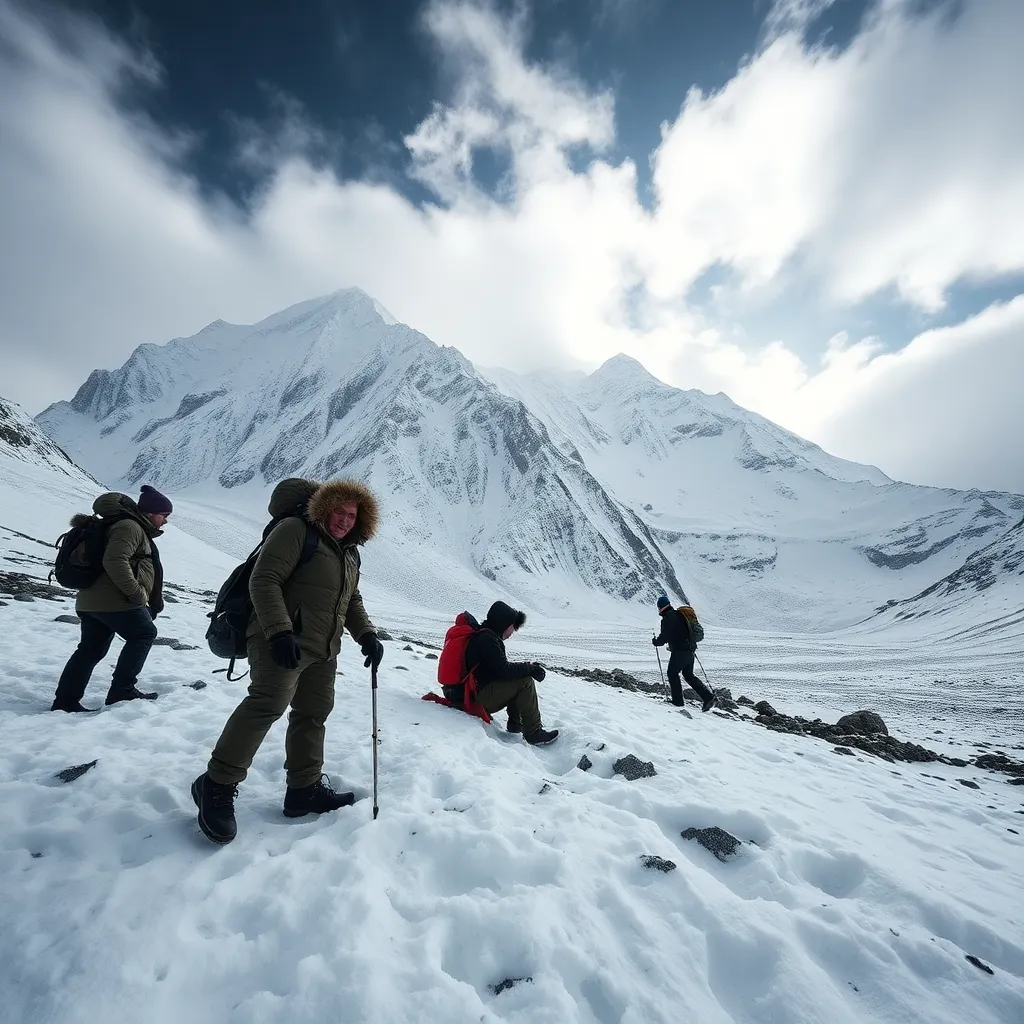The Yeti in the Eyes of the Sherpas: A First-Hand Perspective on the Myth
I. Introduction
The Yeti, often referred to as the “Abominable Snowman,” is a legendary creature believed to inhabit the Himalayan region. This enigmatic figure has captivated the imaginations of adventurers, scientists, and tourists alike, representing the allure of the unknown in one of the world’s most formidable landscapes. For the Sherpa people, who have lived in the shadow of the towering peaks for centuries, the Yeti is not merely a myth but an integral part of their cultural identity and heritage.
This article aims to explore the Sherpa perspective on the Yeti, delving into their historical context, personal anecdotes, and the significance of this myth within their culture. By understanding the Yeti through the eyes of the Sherpas, we can gain deeper insights into how this legend shapes their identity and worldview.
II. Historical Context of the Yeti Myth
A. Origins of the Yeti legend in Himalayan folklore
The Yeti has its roots in the rich tapestry of Himalayan folklore, where it is often described as a large, ape-like creature that roams the snowy slopes. The origins of the Yeti myth can be traced back to ancient Tibetan texts and local legends, where it is known as “Mete,” meaning “a being that is not human.” Sherpas and other Himalayan communities have long shared stories of encounters with this elusive creature, often depicting it as a guardian of the mountains.
B. The evolution of the myth over time
Over the centuries, the Yeti has evolved from a local legend into a global phenomenon. With the arrival of Western explorers in the 19th and 20th centuries, tales of the Yeti began to spread beyond the Himalayas, capturing the imagination of the world. Expeditions, photographs, and even alleged footprints fueled the myth, transforming the Yeti into a symbol of mystery and adventure.
III. The Sherpas: Guardians of the Himalayas
A. Introduction to the Sherpa people and their culture
The Sherpa people are an ethnic group native to the mountainous regions of Nepal, known for their exceptional mountaineering skills and deep spiritual connection to the land. Their culture is rich with traditions, beliefs, and practices that revolve around the natural world. The Sherpas view the mountains as sacred, inhabited by spirits and deities, which influences their interactions with the environment.
B. The role of Sherpas in Himalayan exploration and mountaineering
In the realm of mountaineering, Sherpas have gained international recognition for their expertise. They serve as guides and support staff for climbers attempting to summit some of the world’s highest peaks, including Mount Everest. Their knowledge of the terrain, weather patterns, and local customs is invaluable, making them essential to the success of many expeditions.
IV. Personal Encounters: Sherpa Stories of the Yeti
A. Anecdotes from Sherpas who claim to have seen the Yeti
Many Sherpas recount stories of close encounters with the Yeti, often describing it as a towering figure covered in fur, moving swiftly through the snow. Some reports include sightings during treks, while others involve hearing strange sounds in the night. Here are a few anecdotal accounts:
- A Sherpa named Tenzing recalls a night when he heard heavy footsteps outside his camp, followed by a mysterious growl that sent chills down his spine.
- Another Sherpa, Pasang, tells of a time when he and his companions spotted a large creature at a distance while climbing, which disappeared as quickly as it appeared.
- A group of Sherpa children reported seeing a hairy man playing in the snow, who vanished when they approached.
B. Cultural interpretations of these encounters
These encounters are often interpreted within the context of Sherpa belief systems. Many see the Yeti as a protector of the mountains, embodying the spirit of nature. For the Sherpas, these stories serve to reinforce their connection to the land and the importance of respecting the natural world.
V. Yeti Symbolism in Sherpa Culture
A. The Yeti as a symbol of nature and the spirit world
In Sherpa culture, the Yeti symbolizes the untamed wilderness and serves as a reminder of the power of nature. It is often associated with the spirit world, representing the connection between the living and the supernatural. The Yeti’s elusive nature reflects the mysteries of life and death, as well as the balance between humanity and the environment.
B. The Yeti’s role in traditional Sherpa beliefs and practices
The Yeti appears in various Sherpa rituals and practices, often invoked for protection during treks and expeditions. Sherpas may leave offerings at sacred sites, asking for the Yeti’s favor in ensuring safe passage through the mountains. This interplay between reverence and myth highlights the Yeti’s integral role in Sherpa spirituality.
VI. The Intersection of Myth and Commercialism
A. The impact of tourism on the Yeti myth
The rise of tourism in the Himalayas has transformed the Yeti myth into a commercial venture. Souvenir shops sell Yeti-themed merchandise, and adventure companies promote Yeti treks. While this has brought economic benefits to the Sherpa community, it has also led to the commodification of their culture and legends.
B. How the Sherpa perspective is represented in media and commercial ventures
Media portrayals of the Yeti often sensationalize the myth, focusing on Western interpretations while overlooking the Sherpa perspective. Documentaries, films, and books frequently emphasize the mystery of the Yeti, but they may fail to capture its cultural significance to the Sherpas, leading to a misrepresentation of their beliefs.
VII. Scientific Inquiry and the Yeti
A. Overview of scientific investigations into Yeti sightings
Scientific interest in the Yeti has led to various investigations, including expeditions to collect evidence and studies analyzing hair samples and footprints. Despite these efforts, conclusive proof of the Yeti’s existence remains elusive, leading many scientists to classify it as a myth or a misidentification of known animals.
B. Sherpa skepticism and beliefs regarding scientific explanations
While some Sherpas embrace scientific explanations, others remain skeptical, viewing the Yeti as a spiritual being rather than a physical entity. This skepticism reflects a deeper cultural belief in the interconnectedness of nature and the supernatural, challenging the notion that scientific inquiry can fully explain their experiences.
VIII. Conclusion
The Yeti occupies a unique place in Sherpa identity, embodying their connection to the mountains and their cultural heritage. As a symbol of nature and the spirit world, the Yeti serves as a reminder of the mysteries that lie beyond human understanding. The interplay between myth, culture, and modernity continues to shape the Sherpa experience, as they navigate the challenges of preserving their traditions in an increasingly commercialized world.
Ultimately, the legend of the Yeti invites us to reflect on our own relationships with nature and the stories that define us. By understanding the Sherpa perspective, we can appreciate the depth of this myth and its significance in the rich tapestry of Himalayan culture.



